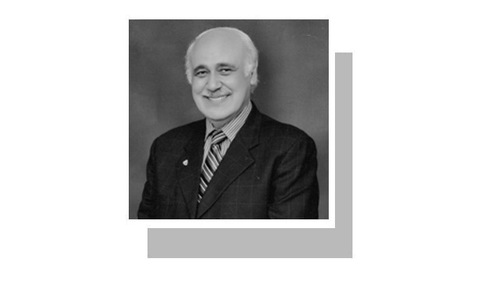CAN the quality of an article be measured by emails, ‘tweets’ and ‘likes’? I ask because I have been observing a correlation between the two ever since Dawn began publishing comments after columns, and I went on Twitter.
Now, I note that most of my articles about domestic, regional and global politics draw scores — sometimes well over a hundred — of comments. Many are critical, but I get my share of fan mail, too. I say this not boastfully, but as matter of fact. I do my best to engage with those who send me emails, even if briefly.
In this category falls a clarification from Ms Salima Hashmi, an old friend from Lahore. A few days ago, she objected to a column (‘The missing Shemzas’) that was published here last Saturday. My point, based on correspondence I had seen on social media, was that the Pakistan National Council of the Arts had returned the 10 paintings gifted to the permanent collection by A.J. Shemza’s widow way back in 1985.
The insinuation here, based on a TV interview with ex-DG PNCA Jamal Shah, was that Mrs Shemza had demanded that her ‘gift’ be returned because the prices of Shemza’s wonderful paintings had shot up in the UK. Mrs Shemza had always claimed that the works were a loan, and not a gift.
It appears from PNCA’s internal documents that the paintings were a loan.
Finally, after years of chasing her claim with an unresponsive art bureaucracy, she wrote to the prime minister who passed on the desperate request to Shafqat Mahmood, the federal minister for education and the arts. Wanting to get the government’s version, I sent him an email for details. Shafqat, also an old friend, complied immediately.
It appears from PNCA’s internal documents that Mrs Shemza had indeed loaned Shemza’s works to the permanent collection. This was clearly established by a letter from Ghulam Rasul, also ex-DG PNCA, and now deceased, offering to buy all 10 paintings from Mrs Shemza for the princely sum of Rs40,000. However, as she wanted to be paid in pounds, the deal didn’t go through. Obviously, she was the owner of the paintings, otherwise why would Ghulam Rasul offer to buy them?
From all this, it is clear that I was wrong on several points in my last column, and apologies are due to Mrs Shemza, Ms Salima Hashmi and Mr Shafqat Mahmood. But my basic argument in the column was that works of arts and invaluable items reflecting our rich cultural heritage continue making their way abroad with few controls imposed by this or past governments.
Other countries have pursued their works of arts and relics from the past with passionate zeal. Colonial nations have been thrown on the defensive, and a debate is now taking place about the rightful place for these objects. The ancient Greek Parthenon Marbles are a case in point.
These strikingly elegant carvings were stripped from the Parthenon by the seventh earl of Elgin with the ‘permission’ of the Ottoman ruler of the day, and taken to London where they have been displayed at the British Museum for over a century. Parliament approved the purchase of these works for £35,000, a vast fortune for those days. For decades now, a succession of Greek leaders have been demanding their return; so much so that one side of the newly constructed Parthenon has been allocated to the marbles. Thus far, Britain has clung on to them.
African states and Australian aborigines have been equally vocal in claiming their artistic and religious heritage. Some have been successful as there’s a growing conscience among ex-colonial powers that they occupy the moral low ground on these issues.
However, let me inject a small caveat here. We in Pakistan have not been exactly vigilant in safeguarding our cultural heritage. Hundreds of priceless Gandhara pieces grace private collections as well public museums abroad. At least in the latter, they can be learned from and admired. In fact, many of these works are despised at best, and destroyed at worst, in Pakistan by the growing numbers of fanatics we are breeding like rabbits.
In India, Mughal artefacts are being airbrushed out of history at an alarming rate as Hindu nationalism seeks to erase the role the Muslims played in the evolution of India. Clearly, history is being weaponised to an unprecedented degree across the border.
At least important antiquities from India and Pakistan can be viewed by an international audience in London, New York, Paris and Tokyo. In Pakistan, our religious zeal makes teaching our Hindu and Buddhist past to schoolchildren anathema. They grow up believing that we were always a Muslim nation, and that other faiths were temporary aberrations.
Until these attitudes change and our kids are taught a more honest version of our past, Buddhist rock carvings in the north will continue to be defaced, and Hindu statues in Sindh will go on facing destruction.
Teaching art at school would also help.
Published in Dawn, October 3rd, 2020
































